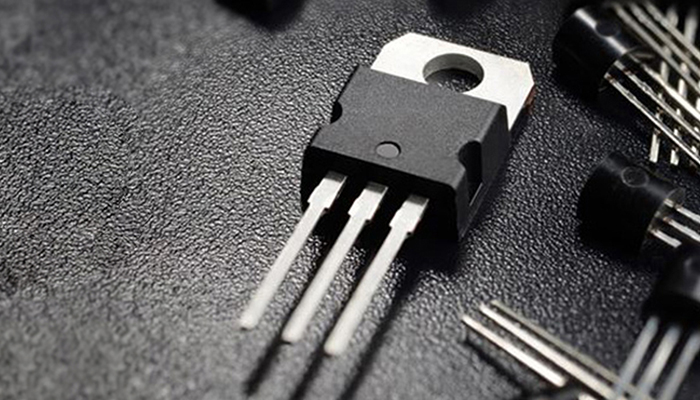Rectifier diode
A semiconductor device that converts alternating current energy into direct current energy. It usually consists of a PN junction with positive and negative terminals. The most important characteristic of a diode is its unidirectional conductivity. In the circuit, current can only flow in from the positive electrode of the diode and out from the negative electrode.
The rectifying diode uses the unidirectional conductivity of the PN junction to change the alternating current into pulsating direct current. The leakage current of rectifier diodes is large, and most of them are packaged with surface contact materials. The shape of the rectifier diode is shown in Fig. 1. In addition, the parameters of the rectifier diode include the maximum rectifier current, which refers to the maximum current allowed for the rectifier diode to work for a long time. It is the main parameter of rectifier diode and the main basis for selecting rectifier diode.

Schottky diode
Schottky diode is named after its inventor, Dr. Schottky. SBD is the abbreviation of Schottky barrier diode (SBD). The SBD is not made by the principle of forming a PN junction by contacting a p-type semiconductor with an n-type semiconductor, but by the principle of forming a metal semiconductor junction by contacting a metal with a semiconductor. Therefore, SBD is also called metal semiconductor (contact) diode or surface barrier diode, which is a hot carrier diode.
A Schottky diode is a metal semiconductor device made of noble metal (gold, silver, aluminum, platinum, etc.) a as a positive electrode, n-type semiconductor B as a negative electrode, and a potential barrier formed on the contact surface of the two has rectification characteristics. Since there are a large number of electrons in the n-type semiconductor and only a small number of free electrons in the noble metal, the electrons diffuse from the high concentration B to the low concentration a. Obviously, there are no holes in metal a, so there is no diffusion movement of holes from a to B. With the continuous diffusion of electrons from B to a, the electron concentration on the surface of B gradually decreases, and the surface electronegativity is destroyed. Thus, a potential barrier is formed, and the electric field direction is B → a. However, under the action of this electric field, the electrons in a will also generate a drift movement from a to B, thereby weakening the electric field formed by the diffusion movement. When a space charge region with a certain width is established, the electron drift movement caused by the electric field and the electron diffusion movement caused by different concentrations reach a relative balance, and a Schottky barrier is formed.

Difference between Schottky diode and rectifier diode
Schottky diode is a kind of fast recovery diode, which belongs to a low-power, ultra-high-speed semiconductor device. Its remarkable characteristics are that the reverse recovery time is extremely short (can be as small as several nanoseconds), and the forward conduction voltage drop is only about 0.4V. Schottky diodes are mainly used as high-frequency, low-voltage and high current rectifying diodes, freewheeling diodes and protection diodes. They are also used as rectifying diodes and small signal detection diodes in microwave communication circuits. It is commonly used in secondary power rectification and high-frequency power rectification of color TV.
What is the difference between Schottky diodes and general rectifying diodes? What is the difference between Schottky diode and general rectifying diode? Let’s study together today.
The Schottky diode uses the metal semiconductor interface as the Schottky barrier to produce rectification effect, which is different from the p-n interface generated by the semiconductor semiconductor interface in general diodes. The characteristics of the Schottky barrier make the on voltage drop of the Schottky diode low, and can improve the switching speed.
The on voltage of the Schottky diode is very low. When a current flows through a general diode, a voltage drop of about 0.7-1.7 volts will be generated, but the voltage drop of a Schottky diode is only 0.15-0.45 volts, so the efficiency of the system can be improved.
The biggest difference between Schottky diodes and general rectifying diodes is the reverse recovery time, that is, the time required for the diodes to switch from the conducting state through which the forward current flows to the non conducting state. Generally, the reverse recovery time of rectifying diodes is about several hundred ns, but it will be less than one hundred ns if it is a high-speed diode. Schottky diodes have no reverse recovery time, so the switching time of Small Signal Schottky diodes is about tens of PS, and the switching time of special large capacity Schottky diodes is only tens of PS. The general rectifier diode will cause EMI noise due to the reverse current within the reverse recovery time. Schottky diodes can be switched immediately without reverse recovery time and reverse current.
If you want to explore more component,
please visit our website:https://www.topdiodes.com
Or send inquiry to : Luna@topdiode.com



